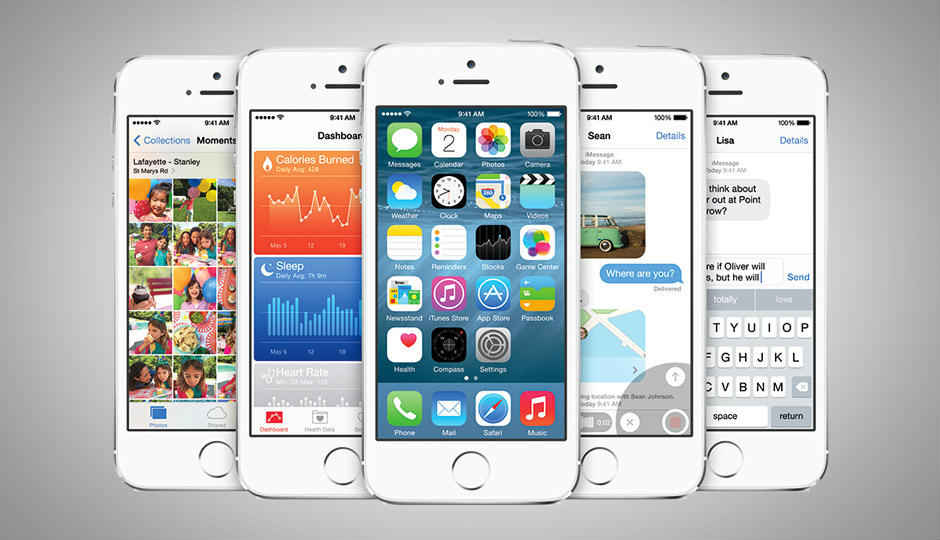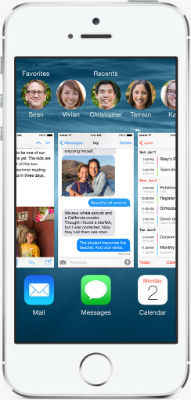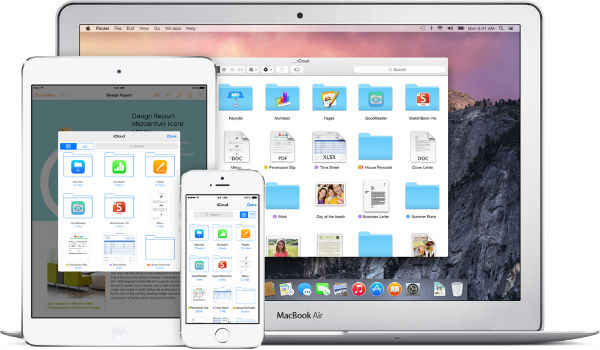iOS 8: 13 important features
Apple showed off iOS 8, the latest version of its mobile OS at the WWDC conference in June.

As expected, Apple unveiled iOS 8, the latest version of its mobile operating system at the WWDC (World Wide Developers Conference) in Cupertino in June. At the conference, Apple execs such as CEO Tim Cook and Senior VP Software Engineering, Craig Federighi, revealed new features such as actionable notifications, improvements to messaging and the keyboard and a greater focus on developers. While there was no word on an exact date when iOS 8 would come to iPhones and iPads, it is expected to go live in August or September of this year. Apple has also revealed that iOS 8 will come to the iPhone 4S and all iPhones that were launched thereafter, the iPad 2 and all iPads launched thereafter (including the iPad Mini) and the iPod Touch 5th generation.
 Survey
SurveyLet's take a look at the most important features of iOS 8 that were talked about at WWDC:
Interactive Notifications or Widgets
Widgets have finally come to iOS. In iOS 8, you can now perform actions on notifications directly without exiting the app you're currently in. For example, if you're using the Facebook app and you get a notification about a message, you will be able to reply to the message from the notification pop-up itself. Currently, actionable notifications will be available for messages, calendar, reminders, mail and certain third party apps like Facebook. Other third-party developers will also be able to add actionable notifications for their apps.
Shortcut to Contacts
You will now see photos of your recent and favourite contacts on the multi-tasking screen (accessed by pressing the home button twice). You can tap on each contact to make a call or send a message.
New features in Mail
Apple has taken pointers from popular third-party email apps like Mailbox and Triage, and introduced a new set of features in its default mail app. These include the introduction of swipe gestures to mark an email as read or flag it for later action. The app will also automatically recognise dates, addresses, phone numbers and flight reservation details in emails so that you can add them to your calendar/phone book with a single tap.
New features in Messages
iOS 8 will enable you to add voice and video messages and location details from within the Messages app itself. You can also create groups within the Messages app and add or remove contacts from the groups.
New keyboard
The iOS 8 keyboard will predict your next word as you type based on your previous usage, and offers suggestions. You will also be able to install and use third-party keyboards, a feature that is very popular among Android users. Adaptxt, a keyboard app for Android that offers contextual predictions, from Keypoint Technologies of India, is one of the third party apps that is already scheduled to launch for iOS 8.
iCloud Drive
iCloud Drive is similar to existing services like Dropbox and Google Drive and can be installed on Windows 8 PCs and OS X machines. Doing so will let you access all files saved on iCloud on any device and work on them with the apps of your choice.
Focus on Health
Apple introduced a new Health app for iOS 8 that can collate information collected on you by other apps and put them in one place for easy reference. Apple also introduced Healthkit, a new tool that developers can use to access your health data for use in their own apps or to communicate with the other health apps you have installed on your iDevice.
Photos
iOS 8 will get a new iCloud Photo Library that will save all your full resolution photos on the cloud and leave 'light' versions of them on your phone to save space. You'll also be able to search through your photos now based on date, time, location and album name of the photos. iOS 8 will also bring a number of photo editing tools and introduce time-lapse video recording that lets you capture a subject over a duration and watch an accelerated version of events.
Spotlight Search
Apple claims that it has improved the search tool inside iOS 8 and that now it considers context and location when delivering results. Instead of opening your browser, you'll be able to search for news, wikipedia pages, music and apps directly from the spotlight search tool.
Greater integration with Mac OS
Apple made it clear that it was focused on improving the integration between iOS devices and Mac machines. With iOS 8 installed on your iPad/iPhone and OS X Yosemite installed on your Mac (and provided you're signed into the same iCloud account on all the devices), you'll be able to start working on an email, browse a website or work on a file in Pages/Keynote/Numbers on either device and continue doing the same when you move to the other device. Your iPad and Mac will also be able to answer calls and receive messages if your iPhone is on the same Wi-Fi network.
Family Sharing
In iOS 8, you will be able to share stuff that you bought from iTunes and the App Store with six other people without needing to share your account details. Parents will also be able to approve a purchase made by a child on another device and the entire group (or 'family' as Apple calls it) will also be able to contribute to a single Family photo album. The 'Find my iPhone/iPad' feature has also been extended to the 'family' and family members will be able to help each other find their misplaced devices.
Developers, developers, developers!
Apart from the focus on integration between iOS and OS X, the big message of the WWDC conference was developer outreach. Apple stated that it has opened up 4,000 APIs in iOS 8 to enable developers to add more functionality to their apps. This includes the ability for developers of social networking apps to add their app as the default sharing destination, for developers of photo editing apps to add their tools and filters to the default camera app, among others. Apple also revealed Swift, a new programming language that, it claimed, made it easier to code apps and software for iOS and OS X.
Gaming
Apple also paid special attention to game developers by introducing three new game developement tools: SpriteKit, for light 2D games; SceneKit, for casual 3D games and; Metal, for high-performance 'console'-level games.
.jpg)
.jpg)
.jpg)

.jpg)
.jpg)
.jpg)
.jpg)
.jpg)
.jpg)
.jpg)
.jpg)

.jpg)
.jpg)
.jpg)
.jpg)
.jpg)
.jpg)
.jpg)
.jpg)
.jpg)
.jpg)
.jpg)
.jpg)
.jpg)
.jpg)
.jpg)
.jpg)